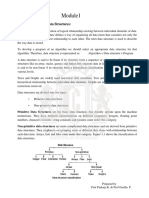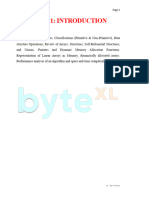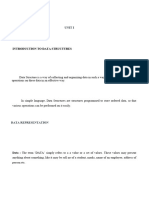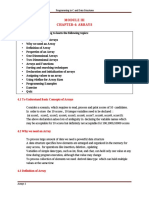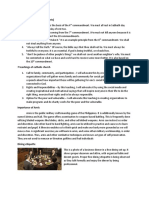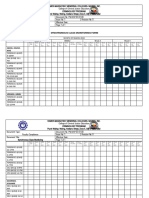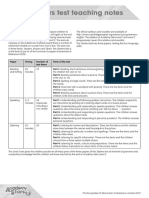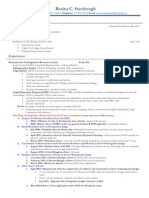0% found this document useful (0 votes)
11 views26 pagesModule 1
The document provides an overview of data structures, defining them as logical or mathematical models for organizing data. It classifies data structures into primitive and non-primitive types, detailing operations such as traversing, searching, inserting, and deleting. Additionally, it discusses specific structures like arrays, queues, and stacks, explaining their characteristics and basic operations.
Uploaded by
mpdps1980Copyright
© © All Rights Reserved
We take content rights seriously. If you suspect this is your content, claim it here.
Available Formats
Download as PDF, TXT or read online on Scribd
0% found this document useful (0 votes)
11 views26 pagesModule 1
The document provides an overview of data structures, defining them as logical or mathematical models for organizing data. It classifies data structures into primitive and non-primitive types, detailing operations such as traversing, searching, inserting, and deleting. Additionally, it discusses specific structures like arrays, queues, and stacks, explaining their characteristics and basic operations.
Uploaded by
mpdps1980Copyright
© © All Rights Reserved
We take content rights seriously. If you suspect this is your content, claim it here.
Available Formats
Download as PDF, TXT or read online on Scribd
/ 26

